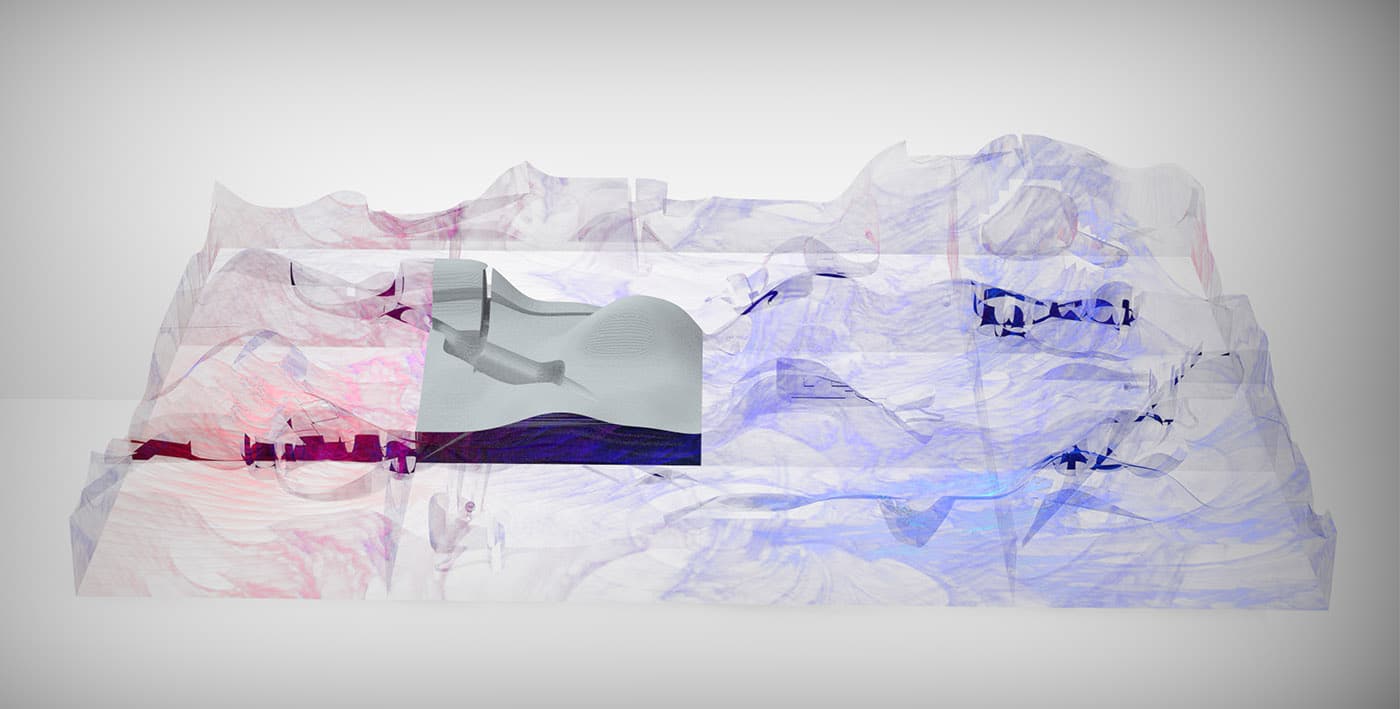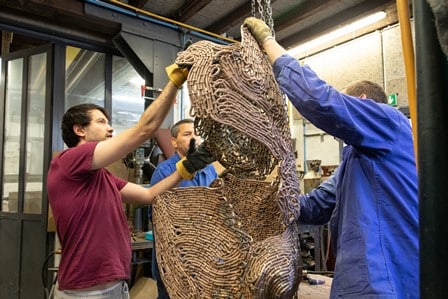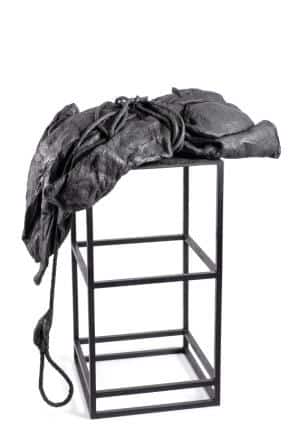For 12 years, MAIF’s cultural patronage policy has been committed to supporting French sculptors. Each year the MAIF Award for Sculpture is attributed to an emerging artist and offers him the opportunity to design and produce a work with the support of experts.
This 2020 edition has just rewarded the artists Grégory Chatonsky and Goliath Dyèvre and their project Internes.
An award as a springboard for artists
Unique in France, the MAIF Award for Sculpture aims to support emerging artists. The winner receives a financial support of €40,000 dedicated to the development and production of his project, the support of technical experts and educational and media support aimed at highlighting his work. Two copies of his artwork are created, one of which joins the MAIF collection, the other is kept by the artist.
Previous winners include Arnaud Grapain (2018) who was able to develop his project, Data Center, with the support of the Susse foundry; Angelika Markul (2017) and her Mylodon de Terre; François-Noé Fabre (2016) with Agava; Florian Viel (2015); Nicolas Milhé (2014)…
2020: an edition from the perspective of new technologies
For eleven years the MAIF Award for Sculpture favoured the creation of works in bronze only. Since this year visual artists have been invited to develop a daring project by integrating a digital dimension into their creative process, whether in the design or manufacture of their works, thanks to new technologies.
More than 170 applications have been received, proposing various projects using algorithms, 3D printing, biology, robotics, artificial intelligence, etc. Four of them were shortlisted in February 2020 by an independent jury of experts and professionals in the field of art and innovation. The four finalists were then ranked by the jury, supplemented by a vote from the public composed of MAIF employees and members.
Grégory Chatonsky and Goliath Dyèvre winners of the MAIF Award for sculpture 2020 with the Internes project
The jury elected Grégory Chatonsky and Goliath Dyèvre as winners of the 2020 MAIF Award for sculpture with their project Internes.
In this project, these artists seek to see what art does to innovation rather than what art does with innovation. Indeed, they invent objects that accommodate augmented reality, whereas augmented reality usually consists of superimposing a digital representation on reality. The project of this duo of artists uses for the first time the technique of 3D concrete printing for an artwork. A real challenge! Internes projects a world where matter becomes a setting for the digital where everything that could be enhanced would be.
Internes will consist of unique sculptures in concrete and aluminium that will be part of a huge system and that can be presented individually or assembled in the same space. The visitor will be able to activate each sculpture with his smartphone, a virtual augmentation will then complete the object with an image and thus transform the work. Aluminium modules, placed on the concrete fragments, can be manipulated by the visitor who will see an organic form in augmented reality.
“Our project questions the relationship between humans, technology and the world around them. INTERNES presents itself as the documentation of a future in which humanity, [following repeated disasters,] would have succeeded in resolving the environmental issue by separating the concepts of matter and form through augmented reality.”
Grégory Chatonsky and Goliath Dyèvre
This project, halfway between hardware and digital will now be able to be further developed and designed in the coming months with the support of the MAIF Award teams.
Since 1994, Grégory Chatonsky has been interested in the capacity of artificial intelligence to produce results resembling a human creation. Artist-researcher at the ENS Ulm and artistic director of the Imago Research Centre, he has previously been exhibited in many places such as the Palais de Tokyo, the Centre Pompidou or the Museum of Contemporary Art in Taiwann.
Goliath Dyèvre created his design studio in 2009 and works on the material and cognitive relationship that human beings have with objects. He teaches at the Beaux-Arts de Lyon and runs a design workshop at the ENSCI-Les Ateliers. He is the winner of several awards such as the competition of the Cité Internationale de la Tapisserie et de l’Art Tissé d’Aubusson (2014), the Agora competition for the city of Bordeaux (2013) and the new talent competition of Cinna (2011).
The finalists of the MAIF Award for sculpture 2020
Three other projects were finalists for the MAIF Award for sculpture 2020:
Alma, by Leonard Martin
Léonard Martin has chosen to revisit the artist’s relationship to his work by inventing a divinity of modern times. Alma is a blown glass automaton capable of programming its movements and emancipating itself from its creator. The material, transparent, allows us to observe the inner machinery rejecting any illusionist ideal.
The work will also incorporate a camera to film the spectator and project his or her image onto a screen located on his or her head. Lights placed on Alma‘s body will allow the organs of the work to be read.
The name Alma echoes the effigy of Alma Mahler, a life-size doll made by the painter Oskar Kokoschka to console himself with his lost love.
Athena, by Hugo Servanin
Hugo Servanin’s project is composed of three elements: a bust, a breathing assistant and an artificial intelligence materialized in the form of electronic components and cables. Just as our brain controls our breathing to make us live, Athena‘s artificial neural network will control a respiratory assistant to give life to an inert body.
Athena thus materializes a reflection on the links between the body and the representations we make of it, but also on the technologies that assist us or increase our capacities.
Soleil City, by Virginia Yassef
Virginie Yassef is designing a sound and sensory device consisting of an animated sculpture, representing an enlargement of a juniper branch, and complemented by a video that visitors will be able to watch directly on their mobile phone.
A sound and vibration system will give the impression that the branch is gifted with speech and expression, making a ventriloquist branch that will come alive in front of the public. A way of giving a voice to nature.









No Comments
Leave a comment Cancel